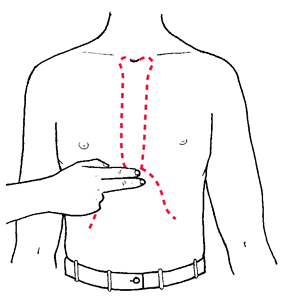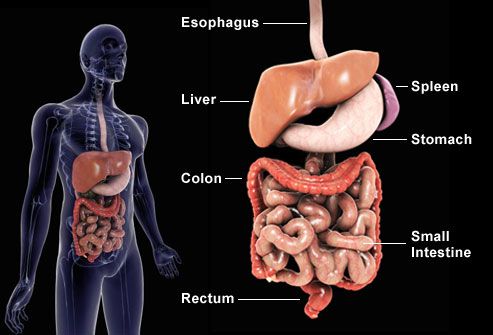Originally posted by Nemo
View Post
Did he have anatomical knowledge?
Collapse
X
-
-
-
-
-
-
Wickerman
The problem with that theory is that he specifically spared the eyes of MJK. If he believed the old wives tale of images at the time of death being recorded on the retina he would surely have done a much better job, not just on Eddowes but on all the others as well.
Prosector
Comment
-
Hi Nemo
I'm a great Lawson Tait fan and he was indeed a pioneer of abdominal surgery but still very much in the minority. It was antisepsis that really made abdominal surgery possible and that didn't really take off until the late 1880s. Lister's early use of his carbolic spray was for compound fractures and amputations.
By the early 19th century full ship's surgeons had to have the same qualifications as other doctors but there will a lot of assistant surgeons (and, as you say loblolly boys) with practical experience but no formal qualifications. However their main function (including the qualified ones) was treatment of gunshot wounds, amputations and treatment of fractures from falling off the rigging. If you were shot in the abdomen or chest no one would dream of going looking for the bullet (think of Nelson). That's why I think that the JTR 'operations' had much more to do with what went on in the dissecting room and the mortuary than in the operating theatre.
I spoke to the Professor of Anatomy in Cambridge recently and he confirmed that in the mid 19th century members of the public could pay to attend a course of lectures or to watch or participate in dissections. Unfortunately they didn't keep records of who availed themselves of this opportunity.
Prosector
Comment
-
Do you see where Bond makes reference to the eyes?Originally posted by Prosector View PostWickerman
The problem with that theory is that he specifically spared the eyes of MJK.
The Chapman case may well be the first time he heard of it. As it stands, the slits on the eyelids of Eddowes had a definite beginning and end, both too similar in length, location and direction, to be accidental.If he believed the old wives tale of images at the time of death being recorded on the retina he would surely have done a much better job, not just on Eddowes but on all the others as well.
I can't think of another valid reason to do this, at night and, when he is pushed for time, other than to allay the possibility the old wives tale contained an element of truth?
Thankyou for your coments.Regards, Jon S.
Comment
-
I do. And I know the markers and indicators, and I'm not even saying that the conclusion is wrong. It's just that there's a practical aspect to it as well. Looking at the in situ sketch, the only places for him to sit/squat whatever is either between her legs or at her shoulder. And if he's sitting at her shoulder a: it would be almost miraculous that he could get her skirts up and b: it's kind of amazing that he can start a cut at her pubis without essentially stretching out over her. Coupled with the cut that goes from the perineum to the hip, and that's just very awkward. He certainly couldn't use both hands, and since he is cutting through fabric he HAS to hold it taut to cut through.Originally posted by lynn cates View PostHello Errata.
"Do we know for absolute sure that she was cut upwards instead of downwards?"
Only if Dr. brown were correct. Of course, other cuts were in and down.
Do you have Stewart's "Ultimate"?
Cheers.
LC
So if he started at the bottom, you kinda gotta ask yourself why when sitting between the legs would have been a great deal easier.
Prosector - I don't espouse a team, but in a lot of ways it would explain a lot. Certainly serial killer teams exist, though it's rare without rape being involved. But it would explain how these women were subdued without a sound. It would explain the swiftness of the mutilations. It would even explain a lot of inconsistencies. A killer fetishizing a body part or area is not unusual. Fetishizing two separate parts is unusual. "Jack" went way overkill on the throat, and he clearly spent a lot of time inside the abdomen. That's kind of odd. The attack on the throat and on the face of Eddowes is very personal, but the opening of abdomen isn't really. And it would certainly explain the learning curve between Nichols and Chapman. Nichols throat mutilation was consistent with the other murders, but the abdominal wounds were far behind. It's almost as if the killer was taught how to get in an abdomen within those three weeks, and maybe that's exactly what happened. And most of all it would certainly explain why all of the throat cuts seem to have been made with a medium length knife, and the abdominal cuts made with a longer knife. Two knives, two killers.
And if they didn't always kill as a team, that could explain a lot of other victims that don't quite fit the Ripper murders. I could probably build a pretty solid argument for a team, I just don't think I believe it.
My argument about a horizontal abdominal cut is based entirely on what was out there for a person to be exposed to and what does it mean. A horizontal cut across the abdomen would be the most logical way for someone to take the uterus, assuming they knew exactly where it was. And c sections and hysterectomies were done that way at that time. He didn't do that. So what does that mean? It may mean that he didn't know where the the uterus was, but knew how to find it. It may have been a fetish thing. It could be a lot of things. But it does mean he wasn't a doctor. And it may mean that his familiarity with human anatomy did not extend to women. He may have had a very good grasp of the layout of male innards, but not female innards. It's not that I'm disagreeing with your conclusion, I'm just looking at what all of these things mean in a larger context. What's the psychology? What does this say about a person? About their social status? A lot of spitballing really.
Oh. And Nelson died in 1805. There was quite a bit of progress since then, sadly mostly due to the Civil War. Evidently we took the knowledge we got from the Civil War (and the death of Garfield) and applied it successfully in the Wild West. In fact the first laparotomy was in 1881 performed by the guy who sewed up the Earps after the OK Corral. But more to the point, they didn't open up Garfield because they were terrified he would die. Nobody wanted to be that guy. Miners and prospectors, there was no fear opening them up.The early bird might get the worm, but the second mouse gets the cheese.
Comment
-
same?
Hello Prosector.
"If he believed the old wives tale of images at the time of death being recorded on the retina he would surely have done a much better job, not just on Eddowes but on all the others as well."
Well, he might if it were the same bloke.
Cheers.
LC
Comment
-
in media res
Hello Errata. Thanks.
"So if he started at the bottom, you kinda gotta ask yourself why when sitting between the legs would have been a great deal easier."
Well, it's described almost as if he began in the middle.
Cheers.
LC
Comment
-
Hi Lynn.Originally posted by lynn cates View PostHello Jon. Thanks.
"With all due respect to Lynn, I have never understood this claim, we have the cut clearly described as beginning at the breastbone."
Look at "The Ultimate" p. 223, top line. "The incision went upwards."
Cheers.
LC
If you don't mind me pointing out, the entire line in question begins:
"The cut commenced opposite the ensiform cartilage, the incision went upwards, not penetrating the skin that was over the sternum. It then divided the ensiform cartilage."
The Doctor is describing the direction of the knife being stabbed upwards into the area beneath the ensiform cartilage (breastbone), under where the two fingers are placed in this diagram.

The report then goes on to explain that the liver was stabbed by the point of the knife. The liver, as you see in the pic below is directly behind the ensiform cartilage.
This is where the abdominal cut began, and ran downwards to the pubes.
 Regards, Jon S.
Regards, Jon S.
Comment
-
Hullo Prosector
May I have your opinion on how long it would've taken Stride to bleedout from her injury?Valour pleases Crom.
Comment

Comment